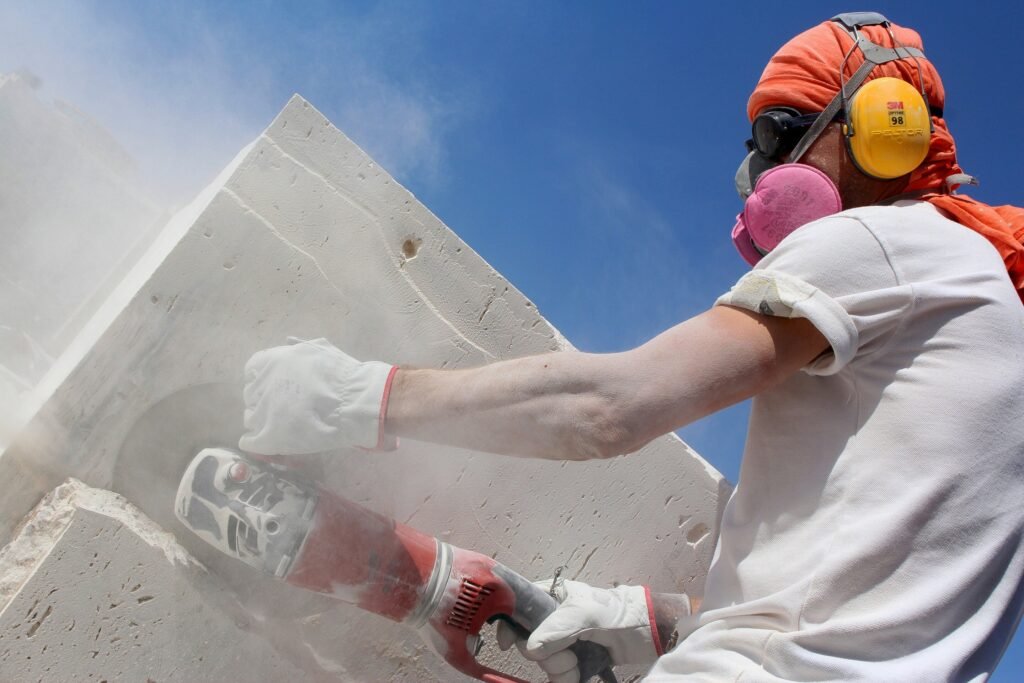In response to the rapid rise in silicosis cases associated with the fabrication and installation of artificial stone countertops, Australia became the first country to ban the material in January 2025. However, new Monash University research has found that the economic burden of silicosis, a progressive and often fatal lung disease, among Victorian workers, is likely to escalate over the coming years.
Led by Dr. Dee Tomic, from the Monash Center for Occupational and Environmental Health, within the School of Public Health and Preventive Medicine at Monash University, and published in the American Journal of Industrial Medicine, the study is the first internationally to quantify the workers’ compensation costs of silicosis. It analyzed all compensation claims for silicosis lodged in Victoria between 2019 and 2024, drawing on data from WorkSafe Victoria, and projected the cost of claims to 2031.
“Silicosis has re-emerged as one of the most serious occupational diseases of our time,” Dr. Tomic said. “Our analysis shows that even with the world-first Australian ban on artificial stone, costs will continue to rise for years to come, because many workers have already been exposed and remain at risk of developing this preventable but irreversible disease.”
The study found:
- 663 silicosis-related compensation claims were made by 356 Victorian male workers aged 15–74 years between 2019 and 2024.
- Costs of silicosis-related claims totaled $111.8 million from 2019 to 2024, growing from $5.1 million in 2019 to $21.9 million in 2024.
- By 2031, Monash University estimates annual compensation payments are projected to hit $29.9 million, with the greatest share related to claims among workers aged 35–44 years.
- About 30% of all costs were common law (fault-based) claims, but for workers aged 15–24 years, these payouts made up more than 70% of costs.
- Payments for lost earnings comprised the largest share of costs (35.8%), followed by common law (fault-based) payments (30.1%); hospital costs and other medical costs (including rehabilitation) were relatively small, at 0.6% and 4.5% respectively.
Dr. Tomic said the findings carried important lessons for Australia and internationally.
“Australia is the first country in the world to ban artificial stone, but it continues to be used all around the world, with thousands of workers exposed to high levels of silica dust and at risk of developing silicosis,” she said. “Our study shows the immense and long-term financial impact that governments, insurers, employers, and health systems face when regulation lags behind science. The human and economic costs are both foreseeable and preventable.”
The authors warn that the true costs will be even higher, as some workers with silicosis never make a compensation claim, and additional costs fall on the welfare and health systems once workers exit the compensation scheme. Additionally, as silicosis is a progressive disease in many cases, hospital and other medical costs are highly likely to increase in the future.
“Preventing exposure to silica dust is the only way to prevent silicosis. Strong enforcement of dust control, worker health monitoring, and clinician education regarding the risk of silica exposure are urgently needed,” Dr. Tomic said.
More information:
Dunya Tomic et al, Counting the Costs of Silicosis in Victoria, Australia, 2019–2024, With Projections to 2031, American Journal of Industrial Medicine (2025). DOI: 10.1002/ajim.70030
Citation:
Study finds silicosis compensation costs set to continue rising in Victoria despite engineered stone ban (2025, October 29)
retrieved 30 October 2025
from https://medicalxpress.com/news/2025-10-silicosis-compensation-victoria-stone.html
This document is subject to copyright. Apart from any fair dealing for the purpose of private study or research, no
part may be reproduced without the written permission. The content is provided for information purposes only.


